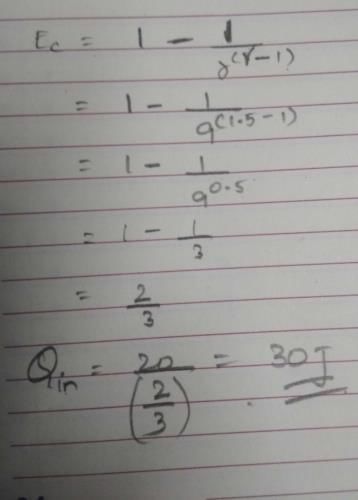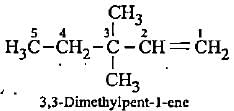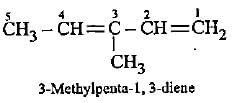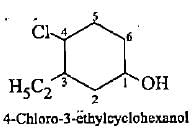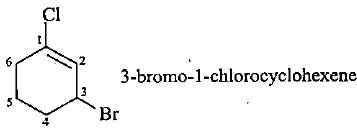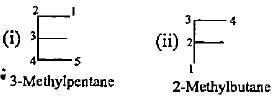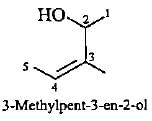All Exams >
NEET >
Weekly Tests for NEET Preparation >
All Questions
All questions of December Week 4 for NEET Exam
Conditional reabsorption of sodium ions and water takes place in- a)DCT
- b)Collecting duct
- c)Henle’s loop
- d)PCT
Correct answer is option 'A'. Can you explain this answer?
Conditional reabsorption of sodium ions and water takes place in
a)
DCT
b)
Collecting duct
c)
Henle’s loop
d)
PCT

|
Ayush Chavan answered |
Conditional reabsorption of sodium ions and water takes place in distal convoluted tubule.
The filtration fraction is the ratio of GFR to RPF where both the values are in ml/min and FF is expressed in percentage. Calculate FF for a normal adult human being, if RPF= 600ml/min :- a)2.08%
- b)20.73%
- c)10.38%
- d)20.83%
Correct answer is option 'D'. Can you explain this answer?
The filtration fraction is the ratio of GFR to RPF where both the values are in ml/min and FF is expressed in percentage. Calculate FF for a normal adult human being, if RPF= 600ml/min :
a)
2.08%
b)
20.73%
c)
10.38%
d)
20.83%
|
|
Janhavi Rane answered |
FF = (125/600)*100 = 20.83%
The following substances are the excretory products in animals. Choose the least toxic form among them?- a)Urea
- b)Uric acid
- c) Ammonia
- d)Carbon dioxide
Correct answer is option 'B'. Can you explain this answer?
The following substances are the excretory products in animals. Choose the least toxic form among them?
a)
Urea
b)
Uric acid
c)
Ammonia
d)
Carbon dioxide
|
|
Anshu Saha answered |
The least toxic form among the excretory products in animals is uric acid.
Explanation:
• Animals excrete waste products that are formed during metabolic processes.
• The excretory products are mainly classified into three types: ammonia, urea, and uric acid.
• Ammonia is highly toxic and water-soluble. It is excreted by aquatic animals, but not by terrestrial animals because of its toxicity.
• Urea is less toxic than ammonia and water-soluble. It is excreted by most terrestrial animals, including humans.
• Uric acid is the least toxic form among the three. It is insoluble in water and is excreted in the form of a paste or a solid.
• Uric acid is the excretory product of birds, reptiles, and insects. It is also excreted by some other animals, such as snails and spiders.
• Uric acid is less toxic than ammonia and urea because it requires less water for its excretion.
• The excretion of uric acid conserves water, which is essential for survival in arid environments.
• In humans, excess uric acid can lead to gout, a painful condition caused by the deposition of uric acid crystals in the joints.
Therefore, uric acid is the least toxic form among the excretory products in animals.
Explanation:
• Animals excrete waste products that are formed during metabolic processes.
• The excretory products are mainly classified into three types: ammonia, urea, and uric acid.
• Ammonia is highly toxic and water-soluble. It is excreted by aquatic animals, but not by terrestrial animals because of its toxicity.
• Urea is less toxic than ammonia and water-soluble. It is excreted by most terrestrial animals, including humans.
• Uric acid is the least toxic form among the three. It is insoluble in water and is excreted in the form of a paste or a solid.
• Uric acid is the excretory product of birds, reptiles, and insects. It is also excreted by some other animals, such as snails and spiders.
• Uric acid is less toxic than ammonia and urea because it requires less water for its excretion.
• The excretion of uric acid conserves water, which is essential for survival in arid environments.
• In humans, excess uric acid can lead to gout, a painful condition caused by the deposition of uric acid crystals in the joints.
Therefore, uric acid is the least toxic form among the excretory products in animals.
A renal corpuscle is :- a)malpighian body
- b)malpighian tubule
- c)nephron
- d)Bowman’s capsule
Correct answer is option 'A'. Can you explain this answer?
A renal corpuscle is :
a)
malpighian body
b)
malpighian tubule
c)
nephron
d)
Bowman’s capsule

|
Ayush Choudhury answered |
Renal corpuscle, also called malpighian body, filtration unit of vertebrate nephrons, functional units of the kidney. It consists of a knot of capillaries (glomerulus) surrounded by a double-walled capsule (Bowman's capsule) that opens into a tubule.
During urine formation, the tubular cells secrete ------------------ into the filtrate.- a)Potassium ions and ammonia
- b)Hydrogen ions and potassium ions
- c)Hydrogen ions, potassium ions and ammonia
- d)Only ammonia
Correct answer is option 'C'. Can you explain this answer?
During urine formation, the tubular cells secrete ------------------ into the filtrate.
a)
Potassium ions and ammonia
b)
Hydrogen ions and potassium ions
c)
Hydrogen ions, potassium ions and ammonia
d)
Only ammonia

|
Kunal Rane answered |
During urine formation, the tubular cells secrete substances like hydrogen ions, potassium ions and ammonia into the filtrate.
The temperature inside a refrigerator is 4°C and the room temperature is 27°C. How many joules of heat will be delivered to the room for each joule of electricity consumed by the refrigerator?( Treat the refrigerator as ideal).- a)1 J
- b)12 J
- c)8.3 J
- d)13 J
Correct answer is option 'D'. Can you explain this answer?
The temperature inside a refrigerator is 4°C and the room temperature is 27°C. How many joules of heat will be delivered to the room for each joule of electricity consumed by the refrigerator?( Treat the refrigerator as ideal).
a)
1 J
b)
12 J
c)
8.3 J
d)
13 J
|
|
Krishna Iyer answered |
Coefficient of performance(cop) of a refrigerator,
β= Q2/Q1-Q2=T2/T1-T2=277/300-277=277/23≈12
OR, Q2/W=12. Therefore, W=1J.Q2=12J
Also, Q1=Q2+W
=(12+1) J
=13J
β= Q2/Q1-Q2=T2/T1-T2=277/300-277=277/23≈12
OR, Q2/W=12. Therefore, W=1J.Q2=12J
Also, Q1=Q2+W
=(12+1) J
=13J
In a Carnot engine 800 J of heat is absorbed from a source at 400 K and 640 J of heat is rejected to the sink. The temperature of the sink is:- a)273 K
- b)100 K
- c)320 K
- d)240 K
Correct answer is option 'C'. Can you explain this answer?
In a Carnot engine 800 J of heat is absorbed from a source at 400 K and 640 J of heat is rejected to the sink. The temperature of the sink is:
a)
273 K
b)
100 K
c)
320 K
d)
240 K
|
|
Nandini Patel answered |
In a Carnot engine, Q1/T1 = Q2/T2
so that the temperature of the sink,
T2 = T1Q2/Q1 = 400x640/800 = 320 K.
pH of urine under healthy conditions is :- a)slightly alkaline
- b)neutral
- c)highly alkaline
- d)slightly acidic
Correct answer is option 'D'. Can you explain this answer?
pH of urine under healthy conditions is :
a)
slightly alkaline
b)
neutral
c)
highly alkaline
d)
slightly acidic

|
Soumya Ahuja answered |
The pH of urine under healthy conditions is slightly less than 7 so, slightly acidic in nature.
What would be the horse power of a steam engine with average pressure of steam 9x 104 Nm-2 , the area of cross section of the piston is 0.2 m2, length of stroke is 0.6 m and piston makes 5 revolutions per second?- a)150 h.p.
- b)140.7 h.p.
- c)104.7 h.p.
- d)144.77 h.p.
Correct answer is option 'D'. Can you explain this answer?
What would be the horse power of a steam engine with average pressure of steam 9x 104 Nm-2 , the area of cross section of the piston is 0.2 m2, length of stroke is 0.6 m and piston makes 5 revolutions per second?
a)
150 h.p.
b)
140.7 h.p.
c)
104.7 h.p.
d)
144.77 h.p.
|
|
Pooja Shah answered |
Energy in 1 revolution=2 x P x a x l=2 x 9 x104 x 0.2 x0.6 j=21600J
Energy in n revolutions= 21600nJ
Power=E/t=21600n/t=21600 x 5=18000 J/s= 108000/746 h.p=144.77 h.p.
Energy in n revolutions= 21600nJ
Power=E/t=21600n/t=21600 x 5=18000 J/s= 108000/746 h.p=144.77 h.p.
An ideal gas undergoes four different processes from the same initial state (Fig.). Four processes are adiabatic, isothermal, isobaric and isochoric. Out of 1, 2, 3 and 4 which one is adiabatic.
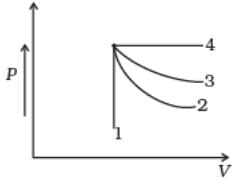
- a)4
- b)3
- c)1
- d)2
Correct answer is option 'D'. Can you explain this answer?
An ideal gas undergoes four different processes from the same initial state (Fig.). Four processes are adiabatic, isothermal, isobaric and isochoric. Out of 1, 2, 3 and 4 which one is adiabatic.


a)
4
b)
3
c)
1
d)
2
|
|
Raghav Bansal answered |
4 is isobaric process, 1 is isochoric. Out of 3 and 2, 3 has the smaller slope (magnitude) hence is isothermal. Remaining process 2 is adiabatic.
Blood enters glomerular capillaries through _____ arteriole and leaves through _____ arteriole:- a)efferent, afferent
- b)radial, collecting
- c)distributing, collecting
- d)afferent, efferent
Correct answer is option 'D'. Can you explain this answer?
Blood enters glomerular capillaries through _____ arteriole and leaves through _____ arteriole:
a)
efferent, afferent
b)
radial, collecting
c)
distributing, collecting
d)
afferent, efferent
|
|
Rohan Singh answered |
Our nervous system has different types of neurons that are constantly at work. Neurons that receive information from our sensory organs (e.g. eye, skin) and transmit this input to the central nervous system are called afferent neurons. Neurons that send impulses from the central nervous system to your limbs and organs are called efferent neurons.
Therefore, as the afferent neurons convey the sensory stimulus to the brain (like burning sensation of a candle), the efferent neurons convey the motor stimulus to the muscles (moving the hand away from the candle). To sum it up: Afferent = Receive and Efferent = Act.
The tracts that are conveying sensations up to the brain are also referred to as the ascending tracts. Going in the opposite direction than the ascending tracts, the tracts linking the brain to all the muscles and organs of the body are called descending tracts.
Which types of fibers are damaged after a spinal cord injury determine the individual failures. If motor (= efferent) fibers are destroyed, you are not able to lift your leg, because the command can’t be transmitted from the brain to the muscles in the leg. If sensory (= afferent) fibers are affected, you and your brain won’t be notified by the sensory organs, e.g. if somebody strikes your leg. In fact, mostly a combination of efferent and afferent fibers is damaged after a spinal cord injury.
Which of the following is not a part of glomerular filtrate?- a)globulins
- b)inorganic salts
- c)glucose
- d)creatinine
Correct answer is option 'A'. Can you explain this answer?
Which of the following is not a part of glomerular filtrate?
a)
globulins
b)
inorganic salts
c)
glucose
d)
creatinine

|
Maheshwar Saini answered |
Glomerular filtrate contains glucose, inorganic salts and creatinine but it do not contain globulins protein.
Read the following :
i. Infants and toddlers are often under habit of bed wetting since micturition is a reflex process.
ii. Adults and grown up children can control this reflex process, voluntarily to some extent.- a)both are correct
- b)Statement i) is correct and ii) is wrong
- c)both are wrong
- d)Statement i) is wrong and ii) is correct
Correct answer is option 'A'. Can you explain this answer?
Read the following :
i. Infants and toddlers are often under habit of bed wetting since micturition is a reflex process.
ii. Adults and grown up children can control this reflex process, voluntarily to some extent.
i. Infants and toddlers are often under habit of bed wetting since micturition is a reflex process.
ii. Adults and grown up children can control this reflex process, voluntarily to some extent.
a)
both are correct
b)
Statement i) is correct and ii) is wrong
c)
both are wrong
d)
Statement i) is wrong and ii) is correct

|
Shivani Tiwari answered |
The process of release of urine is called micturition and the neural mechanism causing it is called the micturition reflex. Adults and grown up children can control the reflex process of micturition voluntarily to some extent.
All of the following organs help in excretion except :- a)Liver
- b)Lungs
- c)Heart
- d)Skin
Correct answer is option 'C'. Can you explain this answer?
All of the following organs help in excretion except :
a)
Liver
b)
Lungs
c)
Heart
d)
Skin
|
|
Sapna Patel answered |
The function of heart is different from the rest options in a way that heart is an organ that pumps blood throughout
the body tissues and removing carbon dioxide and other wastes. And hence does not helps in excretion.
During micturition, the muscles of urinary bladder and urethral sphincters will- a)contract and relax respectively.
- b)none of these
- c)show fatigue
- d)relaxand contract respectively.
Correct answer is option 'A'. Can you explain this answer?
During micturition, the muscles of urinary bladder and urethral sphincters will
a)
contract and relax respectively.
b)
none of these
c)
show fatigue
d)
relaxand contract respectively.
|
|
Jyoti Desai answered |
Micturition is the process of voiding urine from the body. During this process, the muscles of the urinary bladder and urethral sphincters play a crucial role in controlling the flow of urine. The correct answer to the given question is option 'A', i.e., the muscles of the urinary bladder will contract, and the urethral sphincters will relax.
Explanation:
The process of micturition involves the following steps:
1. Filling of the urinary bladder: The urinary bladder is a muscular sac that stores urine until it is eliminated from the body. As the bladder fills with urine, its walls stretch, and the pressure inside the bladder increases.
2. Sensory input to the spinal cord: The stretch receptors in the bladder walls send signals to the spinal cord, indicating that the bladder is full.
3. Activation of the micturition reflex: The spinal cord processes the sensory input and generates a reflex response that activates the muscles of the bladder and urethral sphincters.
4. Contraction of the bladder muscles: The muscles of the bladder wall contract, forcing urine out of the bladder and into the urethra.
5. Relaxation of the urethral sphincters: The urethral sphincters, which are circular muscles that control the flow of urine through the urethra, relax, allowing urine to pass out of the body.
Therefore, during micturition, the muscles of the urinary bladder will contract, and the urethral sphincters will relax to allow the flow of urine out of the body.
Explanation:
The process of micturition involves the following steps:
1. Filling of the urinary bladder: The urinary bladder is a muscular sac that stores urine until it is eliminated from the body. As the bladder fills with urine, its walls stretch, and the pressure inside the bladder increases.
2. Sensory input to the spinal cord: The stretch receptors in the bladder walls send signals to the spinal cord, indicating that the bladder is full.
3. Activation of the micturition reflex: The spinal cord processes the sensory input and generates a reflex response that activates the muscles of the bladder and urethral sphincters.
4. Contraction of the bladder muscles: The muscles of the bladder wall contract, forcing urine out of the bladder and into the urethra.
5. Relaxation of the urethral sphincters: The urethral sphincters, which are circular muscles that control the flow of urine through the urethra, relax, allowing urine to pass out of the body.
Therefore, during micturition, the muscles of the urinary bladder will contract, and the urethral sphincters will relax to allow the flow of urine out of the body.
The ratio of quantity of heat removed per cycle from the contents of the refrigerator to the energy spent per cycle to remove this heat is called the- a)coefficient of performance
- b)principle of heat engine
- c)efficiency of heat engine
- d)efficiency of refrigerator
Correct answer is option 'A'. Can you explain this answer?
The ratio of quantity of heat removed per cycle from the contents of the refrigerator to the energy spent per cycle to remove this heat is called the
a)
coefficient of performance
b)
principle of heat engine
c)
efficiency of heat engine
d)
efficiency of refrigerator
|
|
Lavanya Menon answered |
The ratio of quantity of heat removed per cycle from the contents of the refrigerator to the energy spent per cycle to remove this heat is called the coefficient of performance. It is the definition of coefficient of performance.
Ascending limb of Henle’s loop is not permeable for :- a)Cl−
- b)K+
- c)Na+
- d)H2O
Correct answer is option 'D'. Can you explain this answer?
Ascending limb of Henle’s loop is not permeable for :
a)
Cl−
b)
K+
c)
Na+
d)
H2O
|
|
Anu Mukherjee answered |
The ascending limb of Henle is a segment of the nephron in the kidney that is responsible for reabsorbing certain ions from the filtrate. It is located in the loop of Henle, which is a U-shaped structure that dips into the medulla of the kidney.
The ascending limb is divided into two parts: the thin ascending limb and the thick ascending limb.
The thin ascending limb is permeable to water but not to ions. As the filtrate moves up this segment, water is reabsorbed into the surrounding interstitial fluid through osmosis, leading to an increase in the concentration of the filtrate.
The thick ascending limb, on the other hand, is impermeable to water but actively reabsorbs ions, such as sodium (Na+), potassium (K+), and chloride (Cl-), through a process called active transport. This results in the further dilution of the filtrate and the establishment of a concentration gradient in the medulla of the kidney.
Overall, the ascending limb of Henle plays a crucial role in the formation of concentrated urine by reabsorbing ions and establishing a concentration gradient in the medulla.
The ascending limb is divided into two parts: the thin ascending limb and the thick ascending limb.
The thin ascending limb is permeable to water but not to ions. As the filtrate moves up this segment, water is reabsorbed into the surrounding interstitial fluid through osmosis, leading to an increase in the concentration of the filtrate.
The thick ascending limb, on the other hand, is impermeable to water but actively reabsorbs ions, such as sodium (Na+), potassium (K+), and chloride (Cl-), through a process called active transport. This results in the further dilution of the filtrate and the establishment of a concentration gradient in the medulla of the kidney.
Overall, the ascending limb of Henle plays a crucial role in the formation of concentrated urine by reabsorbing ions and establishing a concentration gradient in the medulla.
The ________ are kidney tissues that are shaped like cones.- a)Renal calculi
- b)Renal pelvis
- c)Renal pyramids
- d)Renal vasculitis
Correct answer is option 'C'. Can you explain this answer?
The ________ are kidney tissues that are shaped like cones.
a)
Renal calculi
b)
Renal pelvis
c)
Renal pyramids
d)
Renal vasculitis
|
|
Meera Singh answered |
Renal pyramids, also known as malpighian pyramids, are kidney tissues that are shaped like cones.
Around 7 to 18 pyramids exist in the innermost part of the kidney, which is called the renal medulla.
In humans, there are usually only seven of the pyramids.
In humans, there are usually only seven of the pyramids.
What activates osmoreceptors in the body?- a)Changes in body temperature
- b)Changes in blood volume
- c)Changes in heart rate
- d)Changes in respiratory rate
Correct answer is option 'B'. Can you explain this answer?
What activates osmoreceptors in the body?
a)
Changes in body temperature
b)
Changes in blood volume
c)
Changes in heart rate
d)
Changes in respiratory rate

|
EduRev NEET answered |
Osmoreceptors in the body are activated by changes in blood volume, body fluid volume, and ionic concentration.
- Osmoreceptors are specialized cells that detect changes in the osmotic pressure or concentration of solutes in the blood. They are primarily sensitive to changes in blood volume, body fluid volume, and ionic concentration.
- When there is a decrease in blood volume or an excessive loss of fluid from the body, the osmoreceptors are activated.
- These changes in blood volume trigger a response in the hypothalamus, which then releases antidiuretic hormone (ADH) or vasopressin. This hormone helps in water reabsorption from the latter parts of the tubules, preventing excessive urine formation and maintaining fluid balance in the body.
Therefore, changes in blood volume play a crucial role in activating osmoreceptors and regulating fluid levels in the body.
The epithelial cells of Bowman’s capsule are called:- a)Podocytes
- b)Calyces
- c)Filtration slits
- d)Slit pores
Correct answer is option 'A'. Can you explain this answer?
The epithelial cells of Bowman’s capsule are called:
a)
Podocytes
b)
Calyces
c)
Filtration slits
d)
Slit pores

|
Arnav Iyer answered |
The parietal layer of Bowman's capsule consists of squamous epithelial cells resting on a basement membrane. The cells are of polygonal shape and contain prominent bundles of actin filaments running in all directions.
The correct representation of 4-hydroxy-2-methylpent-2-en-1 -al Is- a)

- b)

- c)

- d)

Correct answer is option 'A'. Can you explain this answer?
The correct representation of 4-hydroxy-2-methylpent-2-en-1 -al Is
a)

b)

c)

d)

|
|
Hansa Sharma answered |

4-Hydroxy-2-methylpent-2-en-l-al
What is the main function of the hormonal feedback mechanisms involving the hypothalamus, JGA, and heart?- a)Regulate body temperature
- b)Regulate blood glucose levels
- c)Regulate blood pressure
- d)Regulate hormone production
Correct answer is option 'C'. Can you explain this answer?
What is the main function of the hormonal feedback mechanisms involving the hypothalamus, JGA, and heart?
a)
Regulate body temperature
b)
Regulate blood glucose levels
c)
Regulate blood pressure
d)
Regulate hormone production
|
|
Maya Gupta answered |
Regulation of Blood Pressure by Hormonal Feedback Mechanisms involving the Hypothalamus, JGA, and Heart
The main function of the hormonal feedback mechanisms involving the hypothalamus, JGA (juxtaglomerular apparatus), and heart is to regulate blood pressure. This involves a complex interplay between various hormones, organs, and feedback loops that work together to maintain blood pressure within a normal range.
1. Role of the Hypothalamus:
The hypothalamus plays a crucial role in regulating blood pressure through the release of hormones. It senses changes in blood pressure and activates the sympathetic nervous system to initiate appropriate responses.
2. Role of the Juxtaglomerular Apparatus (JGA):
The JGA is a specialized structure located in the kidneys that plays a key role in blood pressure regulation. It consists of juxtaglomerular cells and macula densa cells. The juxtaglomerular cells secrete the enzyme renin in response to decreased blood pressure or decreased sodium levels. Renin initiates a cascade of events leading to the production of angiotensin II.
3. Role of the Heart:
The heart also contributes to blood pressure regulation through the release of hormones. When blood pressure decreases, specialized cells in the atria of the heart called atrial natriuretic peptide (ANP) are released. ANP acts to relax blood vessels, reduce sodium reabsorption in the kidneys, and increase urine output, all of which help to lower blood pressure.
4. Renin-Angiotensin-Aldosterone System (RAAS):
The renin-angiotensin-aldosterone system is a hormonal pathway that plays a critical role in blood pressure regulation. When renin is released from the JGA, it converts angiotensinogen into angiotensin I. Angiotensin-converting enzyme (ACE) then converts angiotensin I into angiotensin II, a potent vasoconstrictor. Angiotensin II increases blood pressure by constricting blood vessels and stimulating the release of aldosterone from the adrenal glands. Aldosterone acts on the kidneys to increase sodium reabsorption and water retention, thereby increasing blood volume and blood pressure.
5. Negative Feedback Loop:
The hormonal feedback mechanisms involving the hypothalamus, JGA, and heart operate through a negative feedback loop. When blood pressure is too low, the hypothalamus stimulates the release of hormones to increase blood pressure. Once blood pressure returns to a normal range, the release of these hormones is inhibited, and blood pressure is maintained within a homeostatic range.
In conclusion, the main function of the hormonal feedback mechanisms involving the hypothalamus, JGA, and heart is to regulate blood pressure. This is achieved through the release of hormones such as renin, angiotensin, aldosterone, and atrial natriuretic peptide, which act on various organs and systems to increase or decrease blood pressure as needed.
The main function of the hormonal feedback mechanisms involving the hypothalamus, JGA (juxtaglomerular apparatus), and heart is to regulate blood pressure. This involves a complex interplay between various hormones, organs, and feedback loops that work together to maintain blood pressure within a normal range.
1. Role of the Hypothalamus:
The hypothalamus plays a crucial role in regulating blood pressure through the release of hormones. It senses changes in blood pressure and activates the sympathetic nervous system to initiate appropriate responses.
2. Role of the Juxtaglomerular Apparatus (JGA):
The JGA is a specialized structure located in the kidneys that plays a key role in blood pressure regulation. It consists of juxtaglomerular cells and macula densa cells. The juxtaglomerular cells secrete the enzyme renin in response to decreased blood pressure or decreased sodium levels. Renin initiates a cascade of events leading to the production of angiotensin II.
3. Role of the Heart:
The heart also contributes to blood pressure regulation through the release of hormones. When blood pressure decreases, specialized cells in the atria of the heart called atrial natriuretic peptide (ANP) are released. ANP acts to relax blood vessels, reduce sodium reabsorption in the kidneys, and increase urine output, all of which help to lower blood pressure.
4. Renin-Angiotensin-Aldosterone System (RAAS):
The renin-angiotensin-aldosterone system is a hormonal pathway that plays a critical role in blood pressure regulation. When renin is released from the JGA, it converts angiotensinogen into angiotensin I. Angiotensin-converting enzyme (ACE) then converts angiotensin I into angiotensin II, a potent vasoconstrictor. Angiotensin II increases blood pressure by constricting blood vessels and stimulating the release of aldosterone from the adrenal glands. Aldosterone acts on the kidneys to increase sodium reabsorption and water retention, thereby increasing blood volume and blood pressure.
5. Negative Feedback Loop:
The hormonal feedback mechanisms involving the hypothalamus, JGA, and heart operate through a negative feedback loop. When blood pressure is too low, the hypothalamus stimulates the release of hormones to increase blood pressure. Once blood pressure returns to a normal range, the release of these hormones is inhibited, and blood pressure is maintained within a homeostatic range.
In conclusion, the main function of the hormonal feedback mechanisms involving the hypothalamus, JGA, and heart is to regulate blood pressure. This is achieved through the release of hormones such as renin, angiotensin, aldosterone, and atrial natriuretic peptide, which act on various organs and systems to increase or decrease blood pressure as needed.
Which of the following compounds Is not correctly matched with Its lUPAC name?- a)CH3CH2CH2COOCH2CH3 - Ethyl butanoate
- b)

- c)

- d)

Correct answer is option 'D'. Can you explain this answer?
Which of the following compounds Is not correctly matched with Its lUPAC name?
a)
CH3CH2CH2COOCH2CH3 - Ethyl butanoate
b)

c)

d)

|
|
Gaurav Kumar answered |

The correct name is 3-methylbutan-2-ol since functional group should get lowest number.
In actual home refrigerator vapours of Freon ( which is dichlorodifluoro methane CCl2F2) act as- a)Sink
- b)working substance
- c)source
- d)Insulating pad
Correct answer is option 'B'. Can you explain this answer?
In actual home refrigerator vapours of Freon ( which is dichlorodifluoro methane CCl2F2) act as
a)
Sink
b)
working substance
c)
source
d)
Insulating pad
|
|
Vijay Bansal answered |
Dichlorodifluoromethane (R-12) is a colorless gas usually sold under the brand name Freon-12, and a chlorofluorocarbon halomethane (CFC) used as a refrigerant and aerosol spray propellant. Complying with the Montreal Protocol, its manufacture was banned in developed countries (non-article 5 countries) in 1996, and developing countries (article 5 countries) in 2010 due to concerns about its damaging impact to the ozone layer.[better source needed] Its only allowed usage is as fire retardant in submarines and aircraft. It is soluble in many organic solvents. Dichlorodifluoromethane was one of the original propellants for Silly String. R-12 cylinders are colored white.
The presence of ketone bodies is an indication of which of the following diseases?- a)Diabetes insipidus
- b)Diabetes mellitus
- c)High blood cholesterol
- d)Liver Cirrhosis
Correct answer is option 'B'. Can you explain this answer?
The presence of ketone bodies is an indication of which of the following diseases?
a)
Diabetes insipidus
b)
Diabetes mellitus
c)
High blood cholesterol
d)
Liver Cirrhosis

|
Lead Academy answered |
- Analysis of urine helps in the clinical diagnosis of many metabolic disorders.
- The presence of glucose or Glycosuria and ketone bodies or Ketonuria in urine is indicative of diabetes mellitus.
Line in NCERT: Not Found
Which of the following is not accumulated by the body of living organisms?- a)Oxygen
- b)Carbon dioxide
- c)Urea
- d)Ammonia
Correct answer is option 'A'. Can you explain this answer?
Which of the following is not accumulated by the body of living organisms?
a)
Oxygen
b)
Carbon dioxide
c)
Urea
d)
Ammonia

|
Arien Instructors answered |
Oxygen is not accumulated by the body of living organisms as this is required by the cells to perform respiration. Also, it is not a waste product of the cells. Animals accumulate ammonia, urea, uric acid, carbon dioxide, water, and ions like Na+, K+, Cl–, phosphate, sulphate, etc., by certain metabolic activities.
The correct decreasing order of priority for the functional groups of organic compounds In the lUPAC system of nomenclature Is- a)- CONH2, - CHO, - SO3H, - COOH
- b)- COOH, - SO3H, - CONH2, - CHO
- c)- SO3H, -COOH, -CONH2, - CHO
- d)- CHO, -COOH, - SO3H. -CONH2
Correct answer is option 'B'. Can you explain this answer?
The correct decreasing order of priority for the functional groups of organic compounds In the lUPAC system of nomenclature Is
a)
- CONH2, - CHO, - SO3H, - COOH
b)
- COOH, - SO3H, - CONH2, - CHO
c)
- SO3H, -COOH, -CONH2, - CHO
d)
- CHO, -COOH, - SO3H. -CONH2
|
|
Anjali Sharma answered |
The order of preference of functional groups is as follows;


Can you explain the answer of this question below:A carnot engine is taking 700 cal from source and is rejecting 500 cal to the sink in each cycle. What is the temperature of sink if the source temperature is 150° C .
- A:
29.02° C
- B:
27.75° C
- C:
30.05° C
- D:
31.5° C
The answer is a.
A carnot engine is taking 700 cal from source and is rejecting 500 cal to the sink in each cycle. What is the temperature of sink if the source temperature is 150° C .
29.02° C
27.75° C
30.05° C
31.5° C
|
|
Mira Sharma answered |
Heat extracted from source Q1= 700 calHeat rejected to the sink Q2= 500 calTemperature of source T1= 150 +273= 423KTemperature of sink T2 to be found: Q2/Q1 = T2/T1 So, T2 = (Q2/Q1) x T1 = (500 x 423)/700 = 302.02 K = 29.022 degree C.
Homeostasis in the body is largely maintained by : excretion and osmoregulation egestion and osmoregulation excretion and egestion osmoregulation, excretion and egestion Homeostasis is the maintenance of constant body temperature. It is mainly maintained by excretion and osmoregulation, which is the function of kidney.- a)osmoregulation, excretion and egestion
- b)egestion and osmoregulation
- c)excretion and osmoregulation
- d)excretion and egestion
Correct answer is option 'C'. Can you explain this answer?
Homeostasis in the body is largely maintained by : excretion and osmoregulation egestion and osmoregulation excretion and egestion osmoregulation, excretion and egestion Homeostasis is the maintenance of constant body temperature. It is mainly maintained by excretion and osmoregulation, which is the function of kidney.
a)
osmoregulation, excretion and egestion
b)
egestion and osmoregulation
c)
excretion and osmoregulation
d)
excretion and egestion

|
Nikita Pati answered |
Homeostasis means maintain the excretion and osmoregulation
Which hormone is released by the JG cells in response to a fall in glomerular blood flow?- a)Atrial Natriuretic Factor (ANF)
- b)Aldosterone
- c)Antidiuretic hormone (ADH)
- d) Renin
Correct answer is option 'D'. Can you explain this answer?
Which hormone is released by the JG cells in response to a fall in glomerular blood flow?
a)
Atrial Natriuretic Factor (ANF)
b)
Aldosterone
c)
Antidiuretic hormone (ADH)
d)
Renin
|
|
Nayanika Chavan answered |
Renin is the hormone released by the Juxtaglomerular (JG) cells in response to a fall in glomerular blood flow.
The Juxtaglomerular cells are specialized cells located in the afferent arterioles of the kidney. These cells function as mechanoreceptors and chemoreceptors, sensing changes in blood pressure and sodium levels.
The release of renin is part of the renin-angiotensin-aldosterone system (RAAS), which plays a crucial role in regulating blood pressure, fluid balance, and electrolyte homeostasis.
Function of Renin:
Renin plays a pivotal role in this system by initiating a cascade of events that ultimately leads to the increase in blood pressure and restoration of glomerular filtration rate. The main functions of renin include:
1. Conversion of Angiotensinogen to Angiotensin I: Renin acts on angiotensinogen, a protein produced by the liver, and converts it into angiotensin I, an inactive precursor.
2. Conversion of Angiotensin I to Angiotensin II: Angiotensin I is then converted into angiotensin II by the angiotensin-converting enzyme (ACE) present in the lungs. Angiotensin II is a potent vasoconstrictor that causes the constriction of blood vessels, leading to an increase in systemic vascular resistance and blood pressure.
3. Stimulation of Aldosterone Release: Angiotensin II also stimulates the release of aldosterone from the adrenal glands. Aldosterone acts on the distal tubules and collecting ducts of the kidney, promoting the reabsorption of sodium and water and the excretion of potassium. This results in an increase in blood volume and blood pressure.
4. Stimulation of ADH Release: Additionally, angiotensin II stimulates the release of Antidiuretic Hormone (ADH) from the posterior pituitary gland. ADH acts on the collecting ducts of the kidney, increasing water reabsorption and concentrating the urine.
Overall, the release of renin by the Juxtaglomerular cells in response to a fall in glomerular blood flow is a crucial step in maintaining blood pressure and fluid balance in the body.
The Juxtaglomerular cells are specialized cells located in the afferent arterioles of the kidney. These cells function as mechanoreceptors and chemoreceptors, sensing changes in blood pressure and sodium levels.
The release of renin is part of the renin-angiotensin-aldosterone system (RAAS), which plays a crucial role in regulating blood pressure, fluid balance, and electrolyte homeostasis.
Function of Renin:
Renin plays a pivotal role in this system by initiating a cascade of events that ultimately leads to the increase in blood pressure and restoration of glomerular filtration rate. The main functions of renin include:
1. Conversion of Angiotensinogen to Angiotensin I: Renin acts on angiotensinogen, a protein produced by the liver, and converts it into angiotensin I, an inactive precursor.
2. Conversion of Angiotensin I to Angiotensin II: Angiotensin I is then converted into angiotensin II by the angiotensin-converting enzyme (ACE) present in the lungs. Angiotensin II is a potent vasoconstrictor that causes the constriction of blood vessels, leading to an increase in systemic vascular resistance and blood pressure.
3. Stimulation of Aldosterone Release: Angiotensin II also stimulates the release of aldosterone from the adrenal glands. Aldosterone acts on the distal tubules and collecting ducts of the kidney, promoting the reabsorption of sodium and water and the excretion of potassium. This results in an increase in blood volume and blood pressure.
4. Stimulation of ADH Release: Additionally, angiotensin II stimulates the release of Antidiuretic Hormone (ADH) from the posterior pituitary gland. ADH acts on the collecting ducts of the kidney, increasing water reabsorption and concentrating the urine.
Overall, the release of renin by the Juxtaglomerular cells in response to a fall in glomerular blood flow is a crucial step in maintaining blood pressure and fluid balance in the body.
In a heat engine the ratio of net work done per cycle by the engine to the total amount of heat absorbed per cycle by the working substance from the source is known as- a)Adiabatic compression ratio
- b)Specifie heat ratio
- c)conductivity
- d)Thermal Efficiency
Correct answer is option 'D'. Can you explain this answer?
In a heat engine the ratio of net work done per cycle by the engine to the total amount of heat absorbed per cycle by the working substance from the source is known as
a)
Adiabatic compression ratio
b)
Specifie heat ratio
c)
conductivity
d)
Thermal Efficiency
|
|
Rajat Kapoor answered |
In thermodynamics, the thermal efficiency is a dimensionless performance measure of a device that uses thermal energy, such as an internal combustion engine, a steam turbine or a steam engine, a boiler, furnace, or a refrigerator for example. For a heat engine, thermal efficiency is the fraction of the energy added by heat (primary energy) that is converted to net work output (secondary energy). In the case of a refrigeration or heat pump cycle, thermal efficiency is the ratio of net heat output for heating, or removal for cooling, to energy input (the coefficient of performance).
According to Carnot theorem no heat engine working between two given temperatures of source and sink can be more efficient than a perfectly ___________ engine working between the same two temperatures- a)Reversible
- b)Heat
- c)Ideal gas
- d)Combustible
Correct answer is option 'A'. Can you explain this answer?
According to Carnot theorem no heat engine working between two given temperatures of source and sink can be more efficient than a perfectly ___________ engine working between the same two temperatures
a)
Reversible
b)
Heat
c)
Ideal gas
d)
Combustible
|
|
Rajeev Nair answered |
According to Carnot theorem no heat engine working between two given temperatures of source and sink can be more efficient than a perfectly reversible engine working between the same two temperatures, by the statement of Carnot theorem.
What effect does ADH have on the kidney function?
- a)Increases glomerular blood flow
- b)to release less water, decreasing the amount of urine produced.
- c)Decreases glomerular filtration rate (GFR)
- d)Decreases blood pressure
Correct answer is option 'B'. Can you explain this answer?
What effect does ADH have on the kidney function?
a)
Increases glomerular blood flow
b)
to release less water, decreasing the amount of urine produced.
c)
Decreases glomerular filtration rate (GFR)
d)
Decreases blood pressure
|
|
Mansi Chakraborty answered |
ADH, or antidiuretic hormone, also known as vasopressin, is a hormone produced by the hypothalamus and released by the posterior pituitary gland. Its main function is to regulate the water balance in the body by controlling the reabsorption of water in the kidneys. ADH acts on the distal tubules and collecting ducts of the nephrons in the kidneys, altering their permeability to water.
The correct answer is option 'B': ADH increases the reabsorption of sodium in the kidneys. This has several effects on kidney function:
1. **Increased water reabsorption**: ADH binds to receptors in the distal tubules and collecting ducts of the nephrons, which results in an increase in the permeability of these tubules to water. This allows more water to be reabsorbed from the filtrate back into the bloodstream, reducing urine volume and preventing excessive water loss.
2. **Increased sodium reabsorption**: By increasing the reabsorption of sodium in the kidneys, ADH indirectly increases water reabsorption. Sodium ions are actively transported out of the tubules and into the interstitial fluid, creating an osmotic gradient that drives the reabsorption of water. This helps to concentrate the urine and retain water in the body.
3. **Increased urine osmolality**: ADH increases the concentration of solutes in the urine by increasing water reabsorption. This leads to a higher osmolality of the urine, which helps to conserve water and maintain the body's water balance.
4. **Decreased urine volume**: As a result of increased water reabsorption, the volume of urine produced is reduced. This helps to conserve water and prevent dehydration.
It is important to note that ADH does not directly affect glomerular filtration rate (GFR) or glomerular blood flow. GFR is primarily regulated by the constriction or dilation of the afferent and efferent arterioles in the glomerulus, which are controlled by other mechanisms such as the renin-angiotensin-aldosterone system. ADH's main role is to regulate water reabsorption in the renal tubules.
The correct answer is option 'B': ADH increases the reabsorption of sodium in the kidneys. This has several effects on kidney function:
1. **Increased water reabsorption**: ADH binds to receptors in the distal tubules and collecting ducts of the nephrons, which results in an increase in the permeability of these tubules to water. This allows more water to be reabsorbed from the filtrate back into the bloodstream, reducing urine volume and preventing excessive water loss.
2. **Increased sodium reabsorption**: By increasing the reabsorption of sodium in the kidneys, ADH indirectly increases water reabsorption. Sodium ions are actively transported out of the tubules and into the interstitial fluid, creating an osmotic gradient that drives the reabsorption of water. This helps to concentrate the urine and retain water in the body.
3. **Increased urine osmolality**: ADH increases the concentration of solutes in the urine by increasing water reabsorption. This leads to a higher osmolality of the urine, which helps to conserve water and maintain the body's water balance.
4. **Decreased urine volume**: As a result of increased water reabsorption, the volume of urine produced is reduced. This helps to conserve water and prevent dehydration.
It is important to note that ADH does not directly affect glomerular filtration rate (GFR) or glomerular blood flow. GFR is primarily regulated by the constriction or dilation of the afferent and efferent arterioles in the glomerulus, which are controlled by other mechanisms such as the renin-angiotensin-aldosterone system. ADH's main role is to regulate water reabsorption in the renal tubules.
How many primary, secondary, tertiary and quaternary carbon atoms are present in the following compound?

- a)One primary, two secondary and one tertiary
- b)Five primary, three secondary
- c)Five primary, one secondary, one tertiary and one quaternary
- d)Four primary, two secondary and two quaternary
Correct answer is option 'C'. Can you explain this answer?
How many primary, secondary, tertiary and quaternary carbon atoms are present in the following compound?


a)
One primary, two secondary and one tertiary
b)
Five primary, three secondary
c)
Five primary, one secondary, one tertiary and one quaternary
d)
Four primary, two secondary and two quaternary
|
|
Jyoti Sengupta answered |
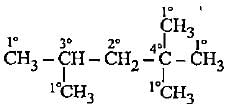
1° - 5, 2° - 1, 3° - 1, 4° - 1
Select the correct IUPAC name for
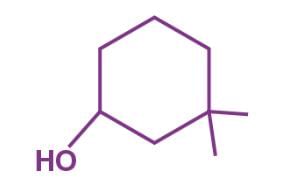
- a)3,3 –dimethyl -3- oxocyclohexane
- b)3,3 –dimethyl -1-cyclohexanol
- c)1,1- dimethyl -3- cyclo-oxanol
- d)1,1- dimethyl -1- cyclo-oxanol
Correct answer is option 'B'. Can you explain this answer?
Select the correct IUPAC name for


a)
3,3 –dimethyl -3- oxocyclohexane
b)
3,3 –dimethyl -1-cyclohexanol
c)
1,1- dimethyl -3- cyclo-oxanol
d)
1,1- dimethyl -1- cyclo-oxanol

|
Ambition Institute answered |
Answer: (b), The IUPAC name of aforementioned compound is 3,3 –dimethyl -1-cyclohexanol.
Which of the following lUPAC names is not correctly matched?- a)

- b)

- c)

- d)

Correct answer is option 'C'. Can you explain this answer?
Which of the following lUPAC names is not correctly matched?
a)

b)

c)

d)

|
|
Raghav Bansal answered |
Correct name is 2- cyclohexylpropane.
The correct lUPAC name of the compound

- a)4-formyl-2-oxocydohexanecarboxylic acid
- b)4-carboxy-2-oxocydohexanal
- c)4-carboxy-1 -formylcyclohexanone
- d)2-carboxy-5-formyl-1 -oxocyclohexane
Correct answer is option 'A'. Can you explain this answer?
The correct lUPAC name of the compound


a)
4-formyl-2-oxocydohexanecarboxylic acid
b)
4-carboxy-2-oxocydohexanal
c)
4-carboxy-1 -formylcyclohexanone
d)
2-carboxy-5-formyl-1 -oxocyclohexane
|
|
Suresh Iyer answered |
Priority of functional groups is
- COOH > - CHO >>C = O.
Hence, the lUPAC name is 4-formyl-2-oxocyclohexane carboxylicacid.
- COOH > - CHO >>C = O.
Hence, the lUPAC name is 4-formyl-2-oxocyclohexane carboxylicacid.
Which ofthe following names of substituted benzene compounds is not correct?- a)
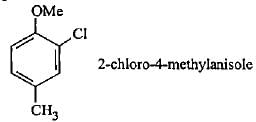
- b)
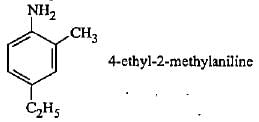
- c)

- d)
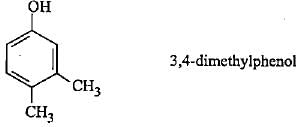
Correct answer is option 'C'. Can you explain this answer?
Which ofthe following names of substituted benzene compounds is not correct?
a)

b)

c)

d)


|
Bs Academy answered |
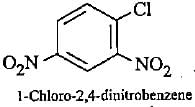
1-chloro-2,4-dinitrobenzene is the correct iupac name of this compound
- Chlorine (Cl) is assigned position 1 because it comes first alphabetically.
- Nitro groups (NO₂) are numbered 2 and 4 to give the lowest possible locants.
- The name follows the order: 1-chloro-2,4-dinitrobenzene, listing substituents alphabetically and indicating their positions.
The correct name of 
- a)2-formyI-3-oxopentanenitrile
- b)2-cyano-3-oxopentanal
- c)2-cyano-1,3-pentadiene
- d)l,3-dioxo-2-cyanopentane
Correct answer is option 'B'. Can you explain this answer?
The correct name of 

a)
2-formyI-3-oxopentanenitrile
b)
2-cyano-3-oxopentanal
c)
2-cyano-1,3-pentadiene
d)
l,3-dioxo-2-cyanopentane

|
Infinity Academy answered |
The compound consists of a five-carbon chain with an aldehyde group (-CHO) at carbon 1, a cyano group (-CN) at carbon 2, and a keto group (=O) at carbon 3. The parent chain is pentanal (aldehyde at C1). The substituents are named accordingly: cyano at C2 and oxo (keto) at C 3. Therefore, the correct IUPAC name is 2-cyano-3-oxopentanal.
Chapter doubts & questions for December Week 4 - Weekly Tests for NEET Preparation 2025 is part of NEET exam preparation. The chapters have been prepared according to the NEET exam syllabus. The Chapter doubts & questions, notes, tests & MCQs are made for NEET 2025 Exam. Find important definitions, questions, notes, meanings, examples, exercises, MCQs and online tests here.
Chapter doubts & questions of December Week 4 - Weekly Tests for NEET Preparation in English & Hindi are available as part of NEET exam.
Download more important topics, notes, lectures and mock test series for NEET Exam by signing up for free.
Related NEET Content

Contact Support
Our team is online on weekdays between 10 AM - 7 PM
Typical reply within 3 hours
|
Free Exam Preparation
at your Fingertips!
Access Free Study Material - Test Series, Structured Courses, Free Videos & Study Notes and Prepare for Your Exam With Ease

 Join the 10M+ students on EduRev
Join the 10M+ students on EduRev
|

|
Create your account for free
OR
Forgot Password
OR
Signup to see your scores
go up
within 7 days!
within 7 days!
Takes less than 10 seconds to signup

